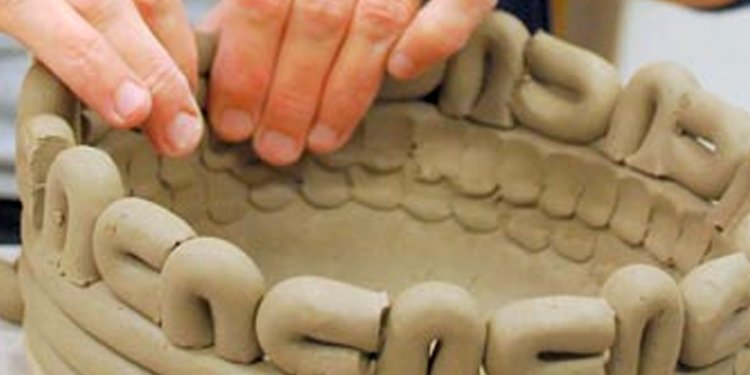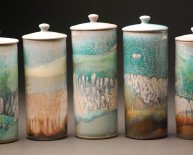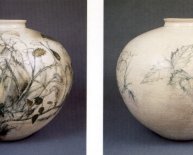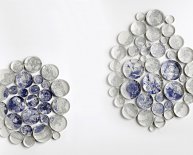
Ceramics hand Building
In this pottery hadbuilding class you learn to work with clay from start to finish using several pottery handbuilding techniques like pinch, coil, slab and sculpting. You also learn to make and fasten separate finishing pieces like lids, handles and knobs. The end result will be your own clay creation. to see our price lust
Our pottery class runs every few weeks. Projects include plates, vases, trays. coasters, bowls, planters, garlic jars, lanterns, etc. If you have a little experience on none, you are welcome to this class. Click here to a see our pottery handbuilding class schedule to register in a class.
If you have a group of a least four people, make a reservation for your own private glass pottery class. A clya handbuilding class can be turned into a to have fun with friends, a ladies night out, an anniversary, a team building activity, a family reunion, a birthday celebration, etc.
ADVANCED FIVE-DAY POTTERY HANDBUILDING CLASS
5 two-hour instructor based sessions, five 2-hour practice-on-you-own bonus sessions, clay material, use of our studio facilities and firings of all the ceramics pieces made. The subject matter on this class includes:
- Slab Constructions
- Clay Figure Sculpture
- Extruded Forms
- Functional Ware
Continuing Education through an open access pottery studio program
If you have attended our pottery handbuilding class or have pottery experience and are looking for studio space to make pottery, we offer an open access pottery art studio.
What is Handbuilding
Handbuilding is a wide range of building methods working with varying types of clay. Some of these clay working methods include pinching, coiling, and slab building. These clay techniques offer the possibility to make everything and anything be it an abstract sculpture, figurative sculpture, garden art, as well as an assortment of functional objects like bowls, cups, platters and tiles.
History on Ceramics and Clay
Ceramics have been around as long as humans have existed and even pre-date written history. One of the oldest pieces of ceramics found is the Venus of Dolní Vestonice. This little 4 inch ceramics sculpture is over 25, 000 years BC! Humans have been using clay vessels throughout history for many different tasks, from storing grains and foods, carting water, cooking, storing oils, preserving foods, transporting goods. Ceramics vessels where the original Tupperware containers. They could be used for just about anything. It is no wonder that being a potter was good business, everybody needed to store something, from precious perfumes and extracts, to the body parts of the pharaohs, and everyone needs a container for something.
These containers were built by hand using coiling techniques, as people learned and developed their techniques, and demand for containers grew, the more inventive potters would try to figure out ways to automate and make their pots faster and faster. They figured out how to spin their coils on a smooth rock using and leaf as the base of their container so the leaf could easily slide on top of the smooth rock. Then as we started moving into the Bronze Age and we learned how to work with metals the smooth rocks were attached to poles with a large counter weight that could be spun thereby getting a few extra turns before manually having to push the rock around and turn their coils. Over the course of millennia the painstakingly hand built process because automated to the point where we have electrical wheels that can spin endlessly without us having to do anything more than just guide the clay as it slides through our fingers.
Clay is basically crushed volcanic rock. Through long periods of geological history and chemical weathering of mountain ranges, larger boulders and crushed into rocks, as they fall off the side of mountain ranges. Those rocks are further crushed into gravel and sand as water and animal make the rocks move against each other, the friction of the rocks and gravel causing smaller and smaller particles of rocks to move further down the mountain rangers where they are collected into the rivers further crushing them against each other as their rainstorms of snow melts move the large massed of water from the rivers to the lakes. The crushed and pulverized dust then settles into the lakebeds where after millions of year of geological time the mountains have become these super salty particles that we know of as clay.
Each mountain range will make it own clay body. So depending on the mineral content in that area the local clay body will pick up those characteristics. Red clays are iron bearing clays which is what gives them the red color. They come from mountain ranges that have high iron content. Porcelain comes from only one country, and that is China. China’s mountain ranges are made up of pure kaolin with very few other contaminants which is why china provides most of the world’s porcelain clay bodies. Stoneware and Earthenware clays are names used to describe clay bodies that mature at specific temperatures and have specific characteristics at those temperatures. Clay bodies will vary from supplier to supplier and region to region and even year to year. Most clay bodies are mixed by the suppliers and as they dig through different regions around mounts the deposits and contents of the minerals change so a clay body from 30 years ago will not behave the same as a clay body from today.

















